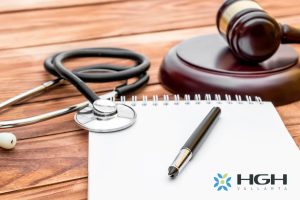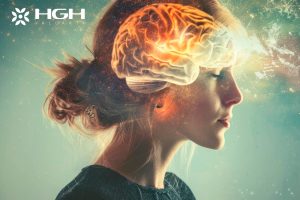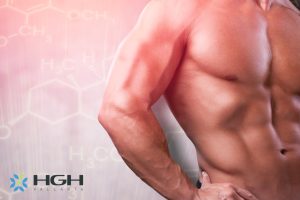HGH on ACL Injuries
Those who have suffered through ACL injuries know the signs all too well, the popping sound followed by pain.
Everyone dreads ACL injuries because even after a long rehabilitation process, most patients still never regain their full strength. 1/3 of NFL players who tear an ACL bid goodbye to professional football.
Each young athlete is afraid of ACL injuries running their careers before even starting them.
In order to improve the plight of half a quarter a million people who suffer from ACL injuries annually, various researches have been done and the University of Michigan, in particular, is investigating insights that may be gained from a controversial substance we know as human growth hormones or HGH.
Related: What You Need to Know About HGH and Injury Recovery

HGH is currently classified as a performance-enhancing drug and it has gained so much notoriety that it is grouped together with anabolic steroids.
HGH is rarely studied in sports medicine and because of this, little is known about it. In a blind trial, the University of Michigan administered HGH to patients before and after ACL surgeries in an effort to know if it can stave off muscle loss and give athletes complete recovery.
The research is a pilot study and researchers aim to get some fundamental information about HGH.
The university’s stellar reputation has helped researchers get funding and help correct misconceptions about HGH.
HGH is a hormone that is responsible for stimulating cell generation and cell growth. There is a synthetic form of HGH and is it only available only through prescription and is only approved for a shortlist of indications, some of which are wasting disease and childhood growth diseases.
However, it is sometimes prescribed also for anti-aging.
HGH has gained quite a notorious reputation and sports commissions have banned its use.
It does not, in any way, enhance athletic performance when taken entirely on its own. Christopher Mendias, assistant professor of orthopedic surgery and molecular integrative physiology, said that HGH is unlike anabolic steroids.
It does not improve muscle strength or mass. The only thing it does is prevent the degradation of muscles and it also helps protect ligaments and tendons.
As a matter of fact, anabolic steroids is the likely cause of more connective tissue injuries and tendon ruptures because it causes the muscle to grow bigger, generating more force which the tendon could not adjust to. On the other hand, HGH naturally promotes connective tissue growth and this is why for many people growth hormones are synonymous to anabolic steroids.
A study done by the University of Copenhagen led one of the researchers, Mendias, to become interested in HGH. Subjects were only in their mid-20s were induced with muscle atrophy and were given hip to ankle cast for two weeks.
Half of the group was given HGH while the other half only had a placebo. After more than a month of exercise, the group which was given hormones was able to regain strength while those on placebo did not.
This finding led Mendias to think about the athletes who missed a few months of training after undergoing ACL surgery.
The ACL is very fragile after surgery and knee movement is limited to allow the graft to heal and this causes muscle growth to go down after some time.
He had long dreamt of conducting a clinical trial for HGH but he was aware that NIH will never fund it.
The human knee is made up of three bones and there are four ligaments holding them together that also allow movement at the same time.
The ACL is vulnerable to tears because it crosses the inside of the knee diagonally. More than 50% of ACL tears also involve injuries to other parts of the knee.
When a patient with ACL tear is enrolled in the new U-M study, he will undergo both high-resolution magnetic resonance imaging, as well as strength testing. The imaging will help evaluate the size and composition of the muscle groups in the leg.
People in the study self-administered HGH and the other half were given a placebo, both were done through subcutaneous injection. The treatments were given one week before surgery and continued for 6 weeks.

With the help of HGH, strength can be restored and arthritis can be prevented. Even if the results of the studies are positive, there are still hurdles before this treatment can be used and one of the main problems that have to be corrected is that HGH is a doping agent, which it is certainly not.











